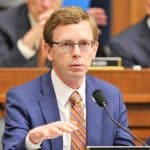Source: New York Times —
As recently as the 1990s, when Jason Nageli started off, the home-building industry was still constructing what real-estate ads would brightly call the “starter home.” In the Denver area, he sold newly built two-story houses with three bedrooms in 1,400 square feet or less.
The price: $99,000 to $125,000, or around $200,000 in today’s dollars.
That house would be in tremendous demand today. But few builders construct anything like it anymore. And you couldn’t buy those Denver area homes built 25 years ago at an entry-level price today, either. They go for half a million dollars.
The disappearance of such affordable homes is central to the American housing crisis. The nation has a deepening shortage of housing. But, more specifically, there isn’t enough of this housing: small, no-frills homes that would give a family new to the country or a young couple with student debt a foothold to build equity.
The affordable end of the market has been squeezed from every side. Land costs have risen steeply in booming parts of the country. Construction materials and government fees have become more expensive. And communities nationwide are far more prescriptive today than decades ago about what housing should look like and how big it must be. Some ban vinyl siding. Others require two-car garages. Nearly all make it difficult to build the kind of home that could sell for $200,000 today.
“It’s just become where you can’t get to that number anymore,” said Mr. Nageli, now the operations manager for the Utah builder Holmes Homes.
Nationwide, the small detached house has all but vanished from new construction. Only about 8 percent of new single-family homes today are 1,400 square feet or less. In the 1940s, according to CoreLogic, nearly 70 percent of new houses were that small.














